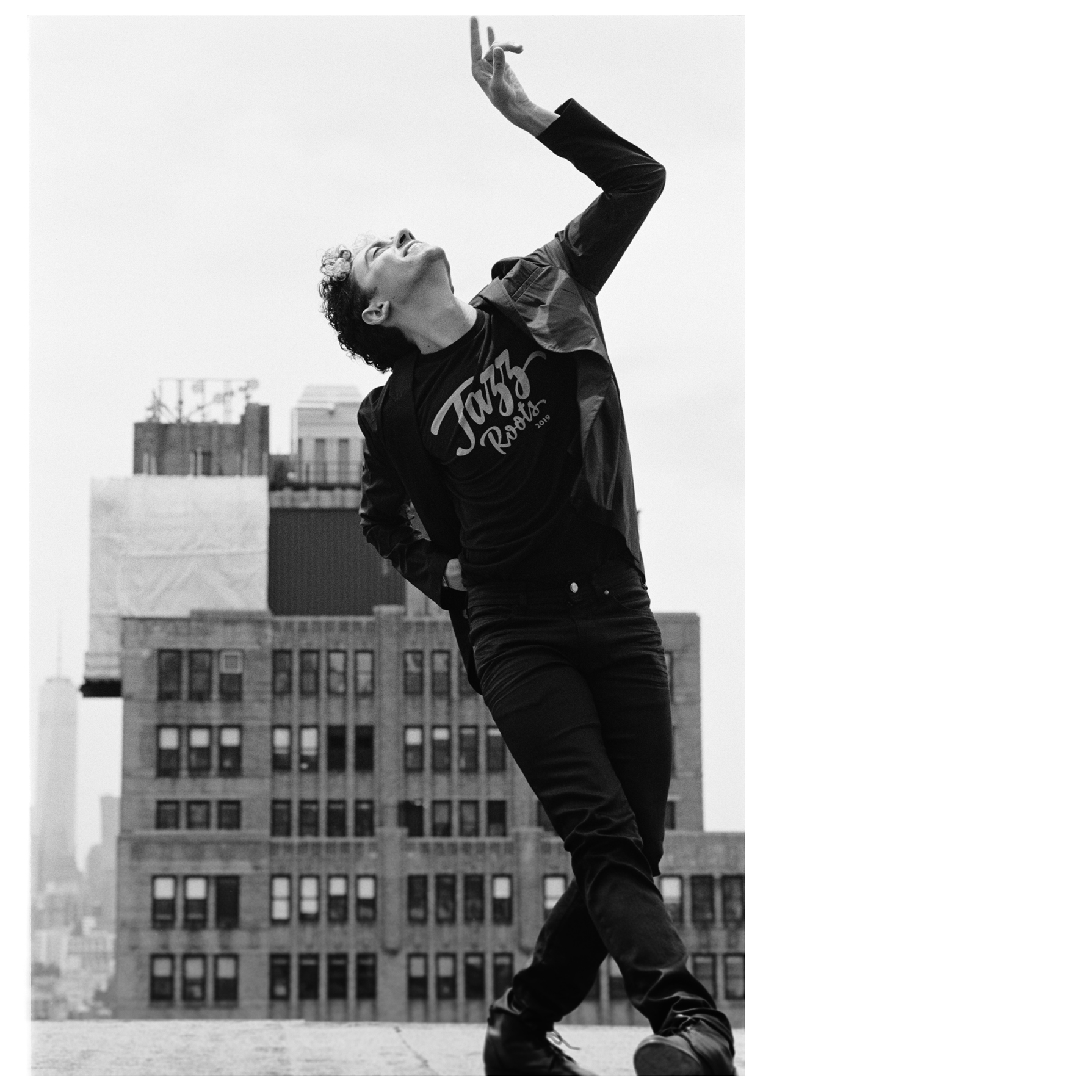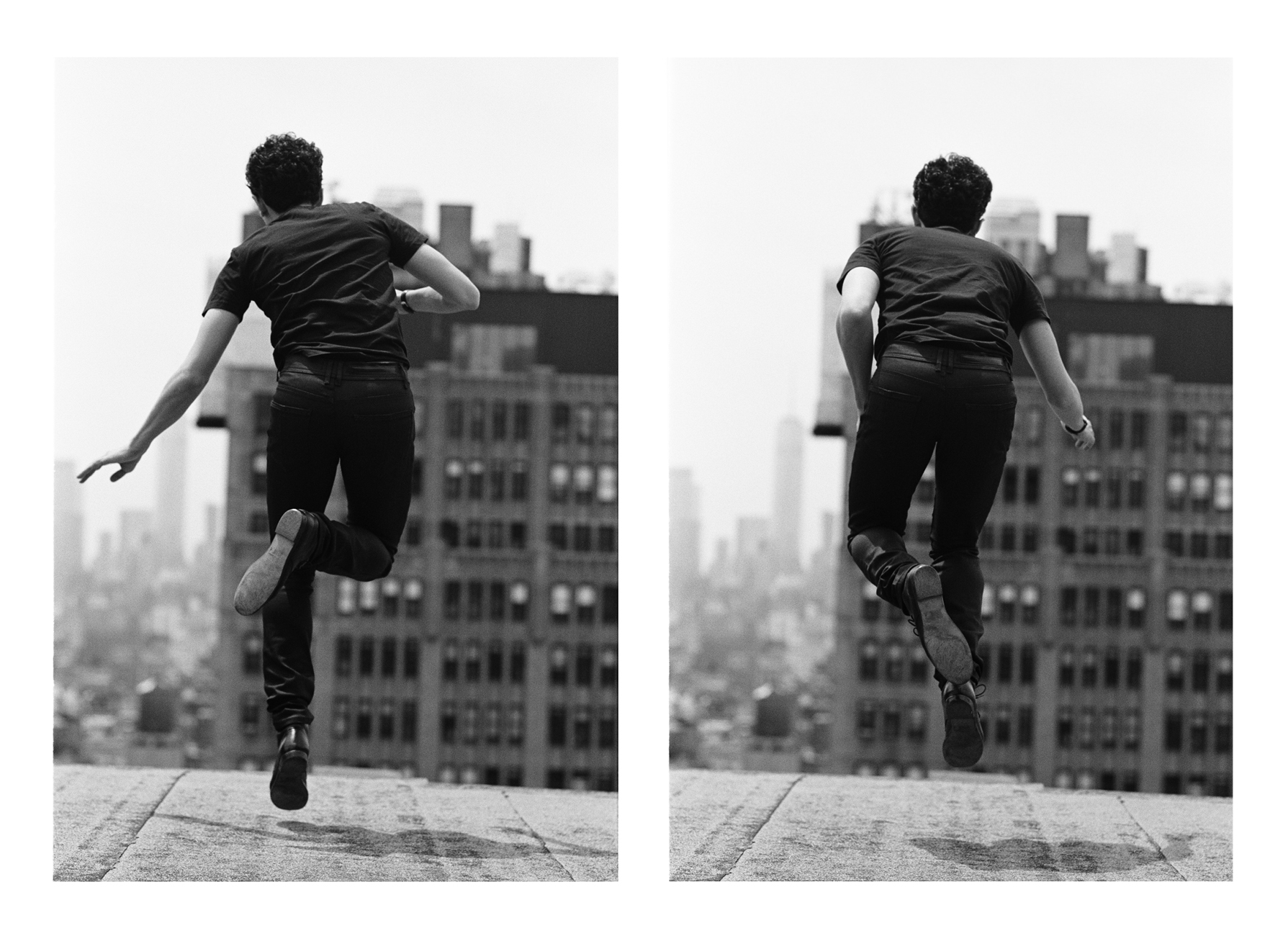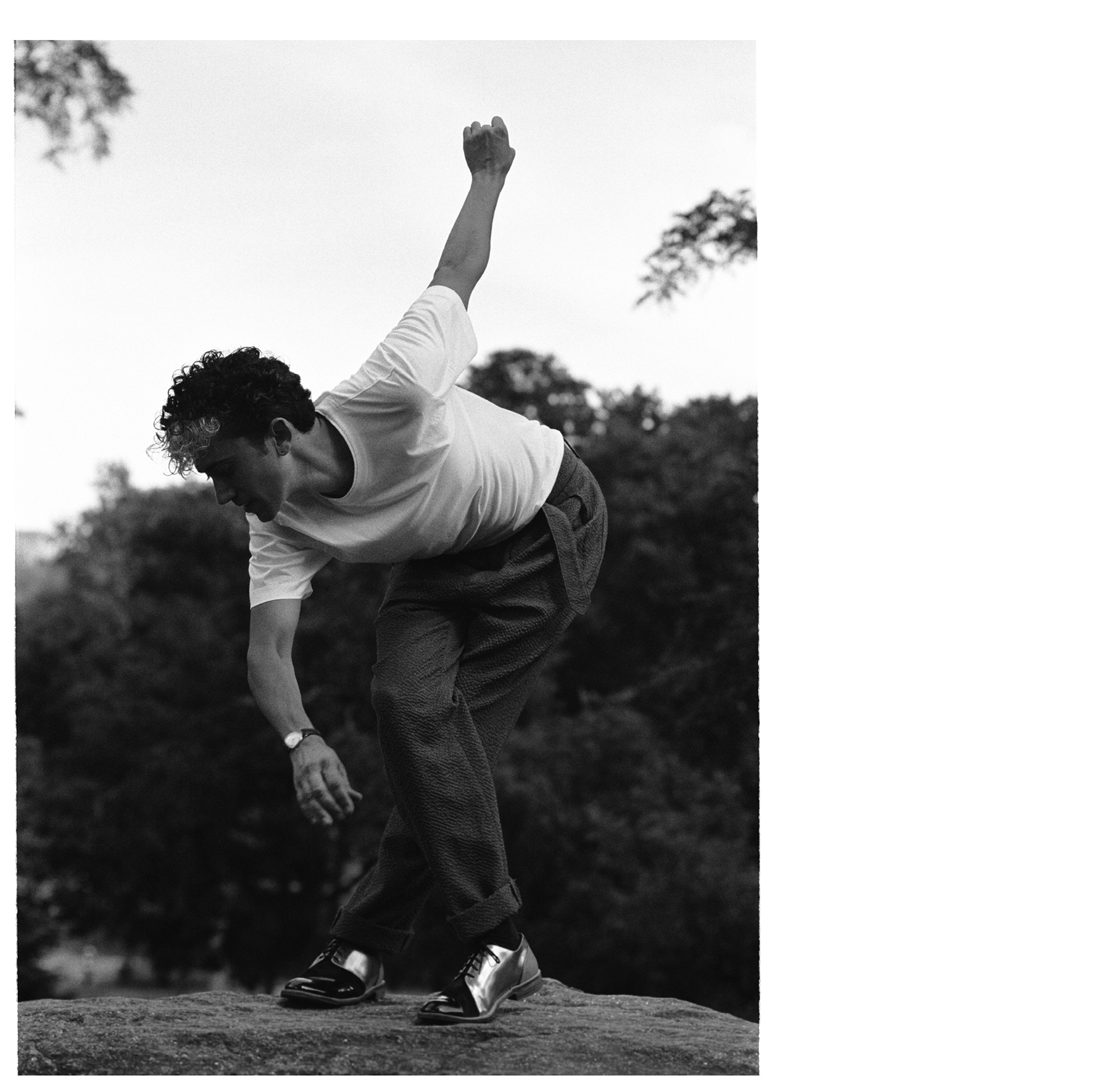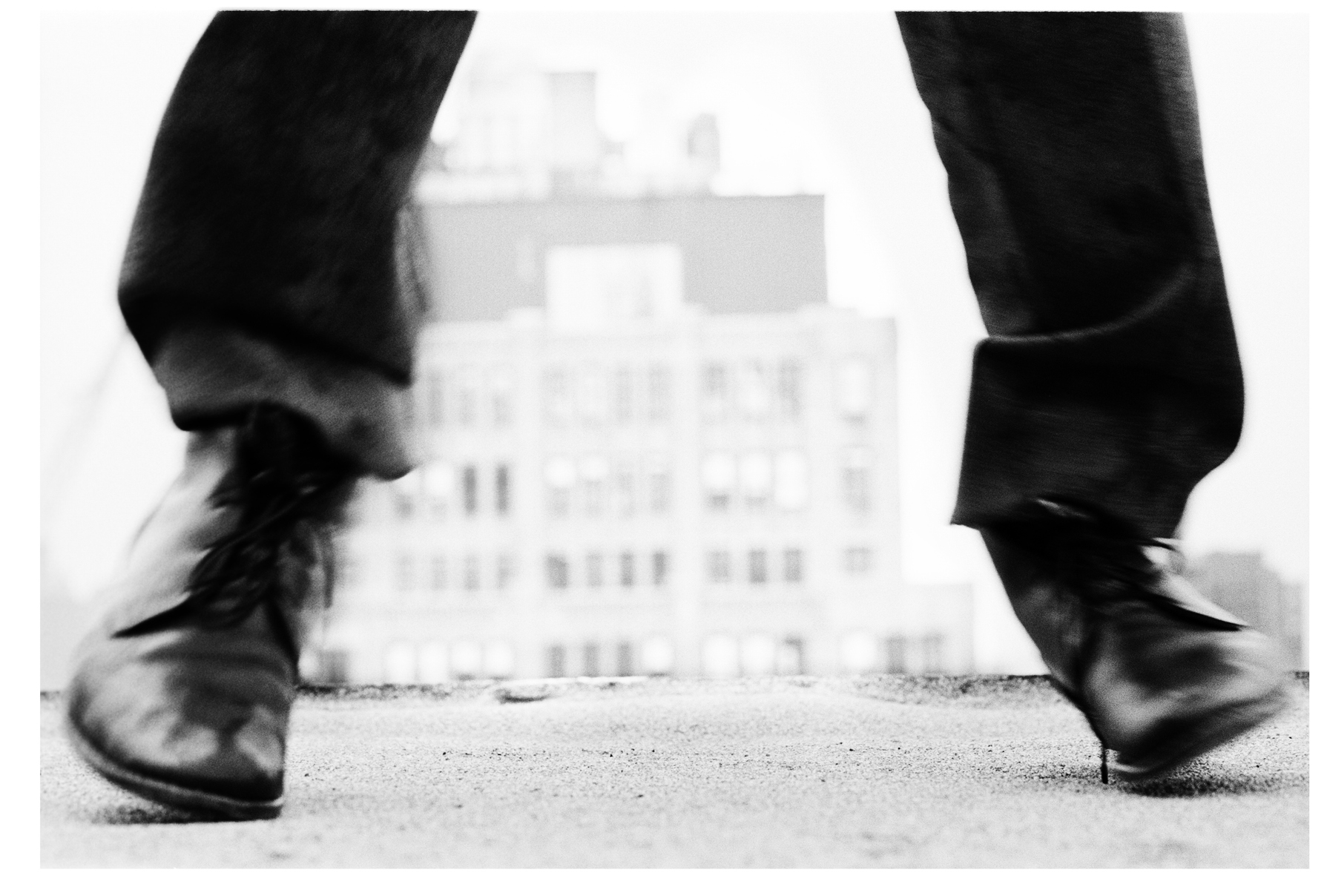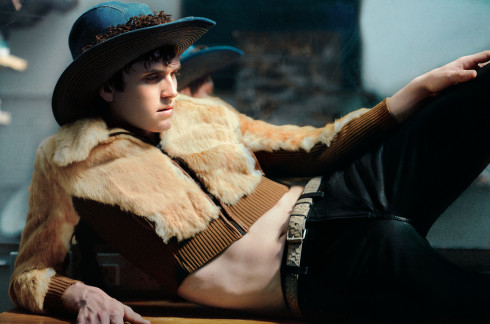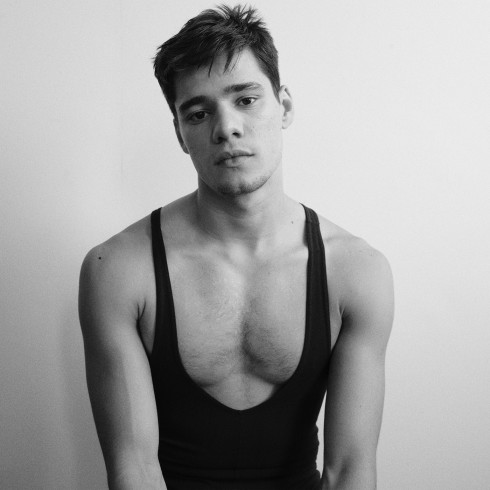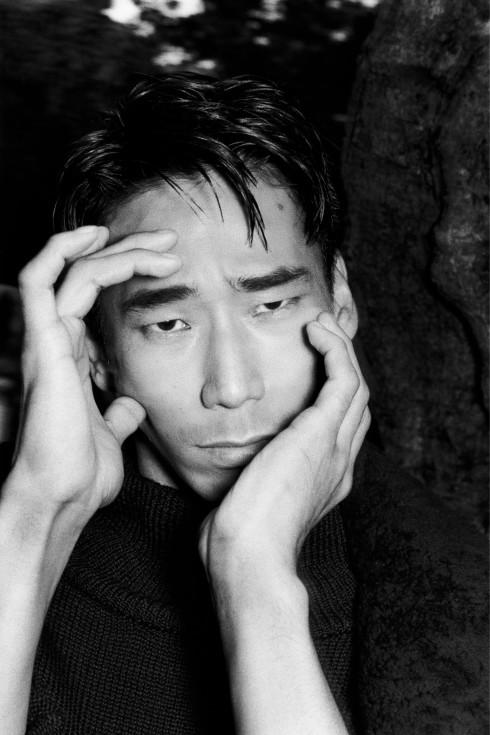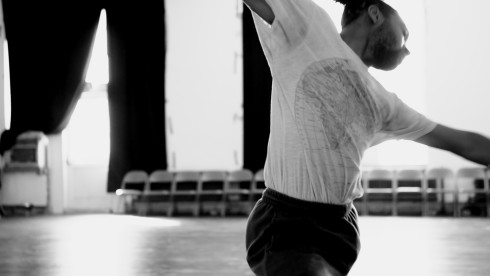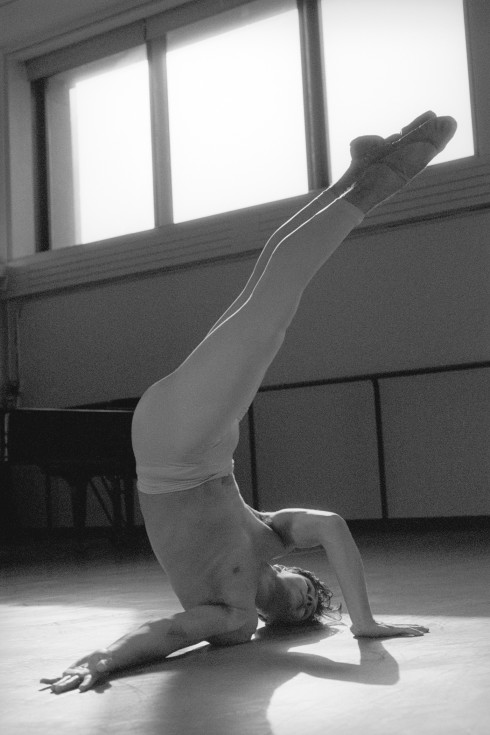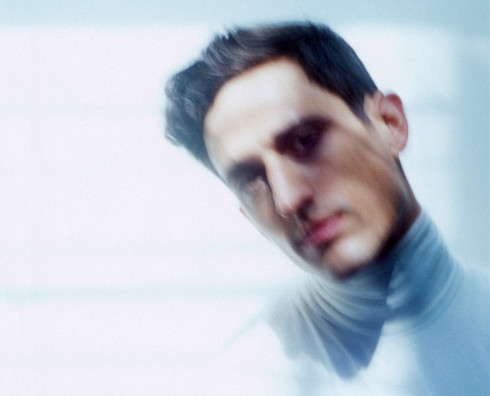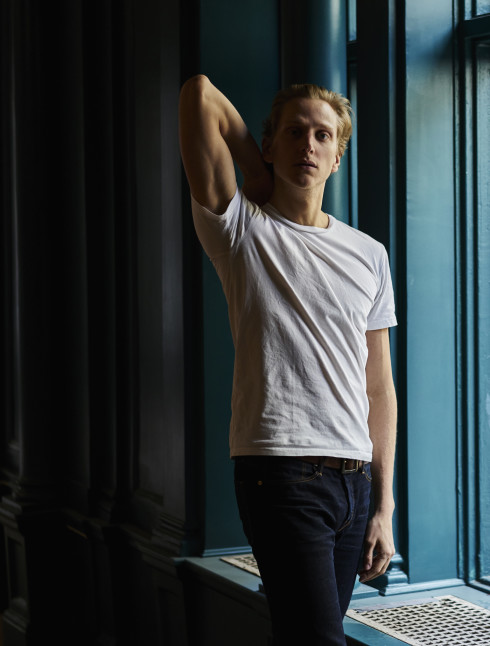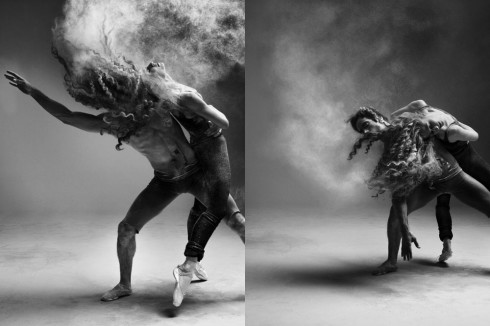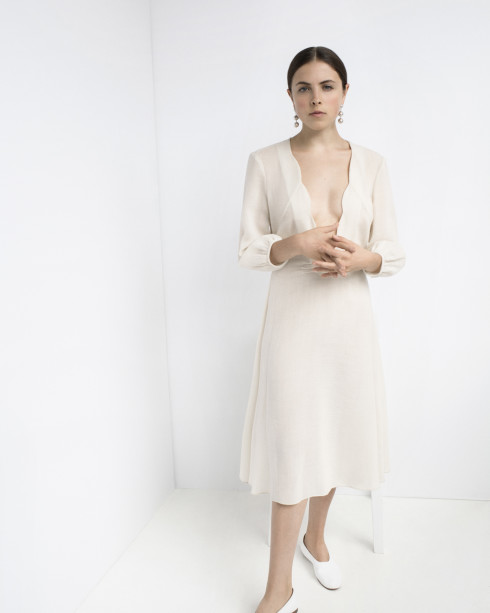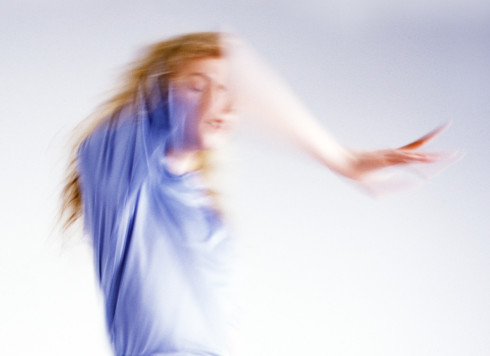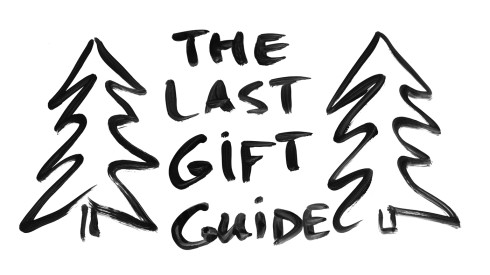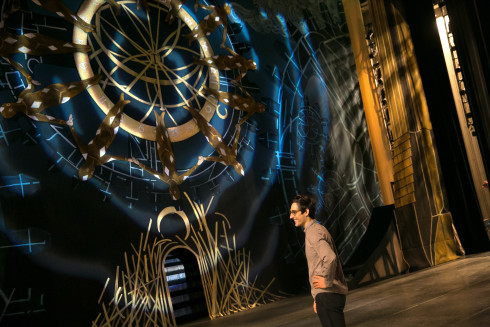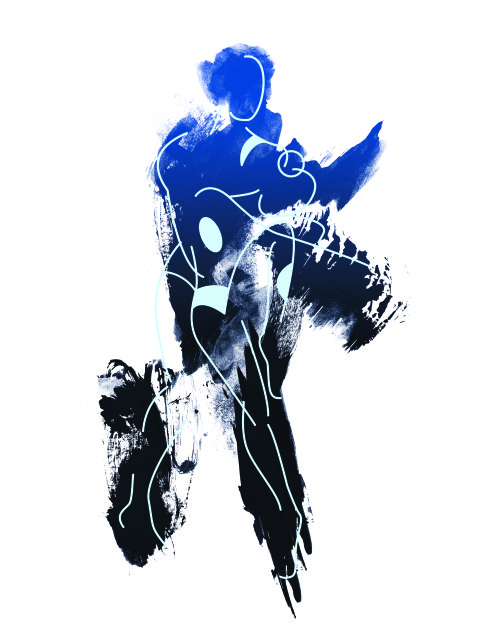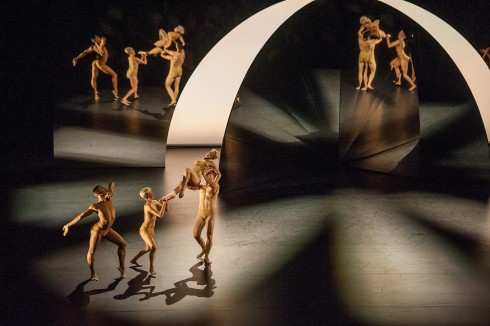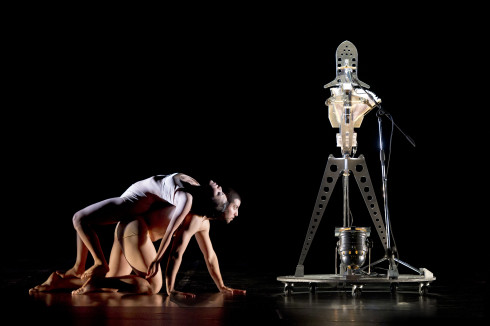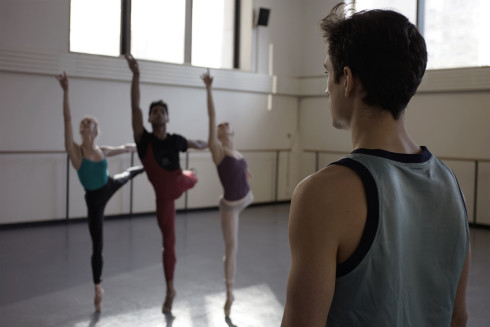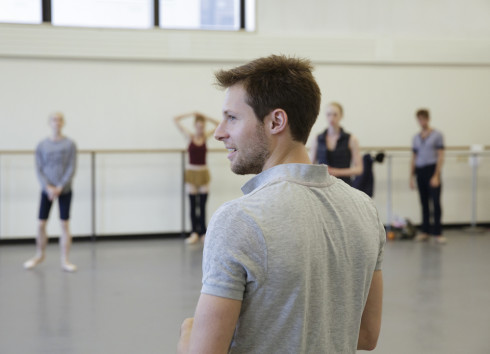
All clothing by Berluti. Socks, worn throughout, by Falke. All shoes throughout, talent’s own.
- By
- Jonathan Shia
- Photography by
- Stefani Pappas
- Styling by
- Joseph Episcopo
Grooming by Kazuto Shimomura. Photographer’s assistant: Philipp Schmidt.
Caleb Teicher Makes Tap Dance New
Over the past few weeks, the tap dancer Caleb Teicher has performed on Broadway with indie songstress Regina Spektor, for crowds of students alongside the beatboxer Chris Celiz, and in a sandbox in the woods of Western Massachusetts accompanied by the classical composer Conrad Tao on toy piano. Such variety would be no surprise for the typical freelance performer attempting to string together disparate gigs into a semblance of a living, but in the case of Teicher, who choreographs and dances under the auspices of his own eponymous company, it is simply a reflection of an artist who seems to be overflowing with intriguing ideas.
Teicher spent his twenty-sixth birthday last weekend performing his first evening-length work, More Forever, at the famed Jacob’s Pillow Festival in Becket, Massachusetts, an annual summer-long celebration of dance in all its forms. Originally commissioned by the Guggenheim, where it premiered in January as part of the Works & Process series to high praise, More Forever is performed on a sand-covered stage, distorting the typical sharp clicks and snaps of tap with scratches, friction, and interference. “There’s a legacy of sand dance in tap dance, but it’s small,” Teicher explains. “It’s logistically challenging and it doesn’t have the same impact, the same natural amplification that tap dance does, and people just aren’t as comfortable with it—myself included. Tap dance, if it’s loud, can hit you in a really powerful way. This asks people to lean in and stay quiet and stay focused.”
Anyone who has followed Teicher’s career over the past few years—from winning a Bessie, the Oscar of the dance world, at the prodigious age of eighteen to his recent Broadway début partnering Spektor—would not be surprised that he likes to challenge himself and his audience. Already celebrated for his speed, passion, and vigor, his latest work demonstrates impressive subtlety and contemplation. Teicher freely admits that More Forever reflects a new mood, one influenced by his recent personal experiences with “the weight of the world and mortality,” he says. “It’s not binary; it’s not like, ‘This is a happy dance, this is a sad dance,’ but I think I had a lot of happy and optimistic and funny things to say as I made dances over many years and then I had a year where some friends passed away, some relationships ended, some friends moved away. It didn’t make me stop dancing, it just infused how I felt about dancing. When I set out to make the work, I wasn’t thinking, ‘This is going to be my sad work,’ but it felt like what I needed to express at the time. It feels personal in a nice way. I feel rejuvenated when I perform it like I’ve had a moment with myself.”
This sort of wistful nostalgia may seem strange coming from someone barely a quarter of a century old, but Teicher has always been ahead of his age. After spending his early years as a drummer, he soon found his way to tap, which he calls “an extension of me playing music as a kid.” “I learned it in the same way, I heard it in the same way, it stimulated my brain in the same way,” he recalls. “It just made sense. Then tap dance was the gateway drug to dance overall.” He spent his high school years exploring ballet and jazz as well before deciding to graduate early and move to New York for a gap year before college. At just seventeen, he was discovered by the MacArthur “Genius Grant”-winning tap dancer and choreographer Michelle Dorrance, who quickly hired him for her then-newly launched company. He was cited for “magically channeling Fred Astaire in his utterly relaxed but beautifully integrated tap dancing” when he picked up his 2011 Bessie for Outstanding Individual Performance a few months later. He has been nominated in the Outstanding Production and Breakout Choreographer categories this year.
After that auspicious start, Teicher’s gap year stretched to two as he tried to establish himself as a dancer-for-hire. “It does a lot for your confidence, but it’s not like the offers came pouring in,” he laughs about the Bessie. “I won the award and I went back to taking class and I went back to auditioning. Most of the people I auditioned for were like, ‘Oh that’s nice,’ and then they just watched me dance. I got over that whole prestige thing pretty early.” Soon enough, he was faced with a decision between enrolling at Juilliard and joining an international tour of West Side Story. He ended up packing his bags and heading to Europe. “I’ve been freelance my whole life since I left high school,” he says. “I’ve never clocked in and clocked out.”
After a few months on the road, he settled back in New York, where he began to choreograph on the side between gigs. “I liked making stuff,” he offers. In 2015, he was awarded a residency at the American Tap Dance Foundation, which offered him his first opportunity to formally present his own work. The journey to Caleb Teicher & Company progressed organically from there, with commissions coming one after another until he had enough pieces to fill an entire evening. His company has performed at the Joyce, New York City Center, La Mama, and the 92nd Street Y and is set to take the stage at the Lincoln Center Out of Doors festival tomorrow night and the Guggenheim Bilbao later this month. “Organizing a company is hard work,” he laughs. “It’s just starting to feel easier because I think I’m just starting to get good at it.”
Teicher says he continues to look to Dorrance for inspiration, recognizing in her a kindred spirit as part of a new generation of dancemakers who are confronting the sometimes troubled legacy of tap head on. “She’s very hard working and her sense of morality is the current that swims through everything,” he explains. “She’s always trying to do the right thing. I felt and feel the same way about myself. I think both of us recognize that we have the opportunity to make a world for tap dancers, for jazz dancers, for these dance forms that don’t get that much play, dance forms that have a really complicated history in America as related to their origins and African-American roots through segregation and now inclusion and diversity. The story of it is so vast and complicated.”
There is something innately American about tap, swing, and jazz—the forms that Teicher is working in and updating for a new age—in their physicality, in their seeming optimism, in their popular appeal, and even in their difficult relationships to race. “America has a deeply complicated history, so if the dance form feels really American, that means it’s going to have a really messed up past, right?” he reasons. But rather than reject them for their tangled legacies, Teicher insists that the only way forward is by building on that history. “We’re trying to do the right thing. We’re trying to make new things and we’re trying to be respectful of what came before us. We’re trying to honor that,” he says. “We’re trying to think about what values are baked into the dance. It’s not just about the steps, it’s not just about the æsthetic, it’s about how these people that did this before us felt about the world and what they wanted. It’s a community thing where you feel connected to not just a style of dance, but a lifestyle. It’s a way of life, it’s a way of seeing the world. I guess the pieces I make are my way of saying, ‘I would like the world to look like this. How do you feel about that?’ It’s not utopian, but I’m trying to make the world that I want to be in and put that on stage.”
Caleb Teicher & Company performs at Lincoln Center Out of Doors tomorrow.
- By
- Jonathan Shia
- Photography by
- Stefani Pappas
- Styling by
- Joseph Episcopo
Grooming by Kazuto Shimomura. Photographer’s assistant: Philipp Schmidt.
